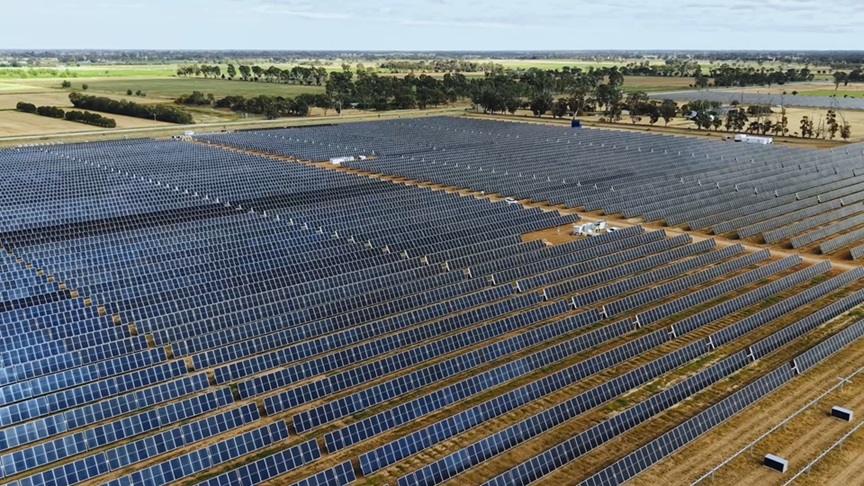Apple announced plans to expand its renewable energy capacity in Australia with a new solar project under construction in Lancaster, Victoria, forming part of the company’s efforts to address the climate impact of its customer’s use of its products.
Emissions from product use account for 29% of Apple’s carbon footprint, according to the company’s most recent Environmental Progress report. Addressing these emissions forms a major part of the company’s strategy to achieve its ambition to become carbon neutral across its entire business, manufacturing supply chain, and product life cycle by 2030, a goal set by the company in 2020.
The company aims to match all the electricity used to charge its products with 100% clean energy within five years. The Lancaster solar project and others planned in Australia are intended to help meet that target and support the country’s transition to renewable power sources.
Apple said that it aims to grow its commitment to Australian renewable energy with multiple projects in the coming years, contributing over 1 million megawatt-hours of new clean electricity annually by 2030.
The new project, developed in partnership with European Energy, is expected to start generating power next year.
Lisa Jackson, Apple’s Vice President of Environment, Policy and Social Initiatives, said:
“By 2030, we want our users to know that all the energy it takes to charge their iPhone or power their Mac is matched with clean electricity. We are proud to do our part to support Australia’s transition to a cleaner grid and drive positive impacts for communities and nature – all while moving closer to our ambitious goal to be carbon neutral across our entire footprint.”
Apple also announced a new investment in New Zealand through its Restore Fund, which supports nature-based carbon removal efforts. In partnership with Climate Asset Management, Apple is backing a project to restore 8,600 hectares of forestland across five sites, combining redwood forestry with the conservation of 3,000 hectares of native forest.
Launched in 2021 by Apple and partners Conservation International and Goldman Sachs, the Restore Fund was established to encourage investment to protect and restore ecosystems and scale natural carbon removal solutions. The initiative was expanded in 2023 with the launch of a $200 million fund managed by Climate Asset Management aimed at supporting carbon removal projects, and again in 2025 with additional direct investments from Apple in nature-based projects in the U.S. and Latin America, while Apple suppliers TSMC and Murata have also invested in the fund. To date, Apple has invested in two dozen conservation and regenerative agriculture projects across six continents through the Restore Fund.
The company also shared an update on another Restore Fund project in Queensland, where 1,700 hectares of former sugarcane farmland are being converted into a macadamia orchard. The site includes a 100-hectare restoration area managed with Indigenous conservation organization W.Y.L.D.

